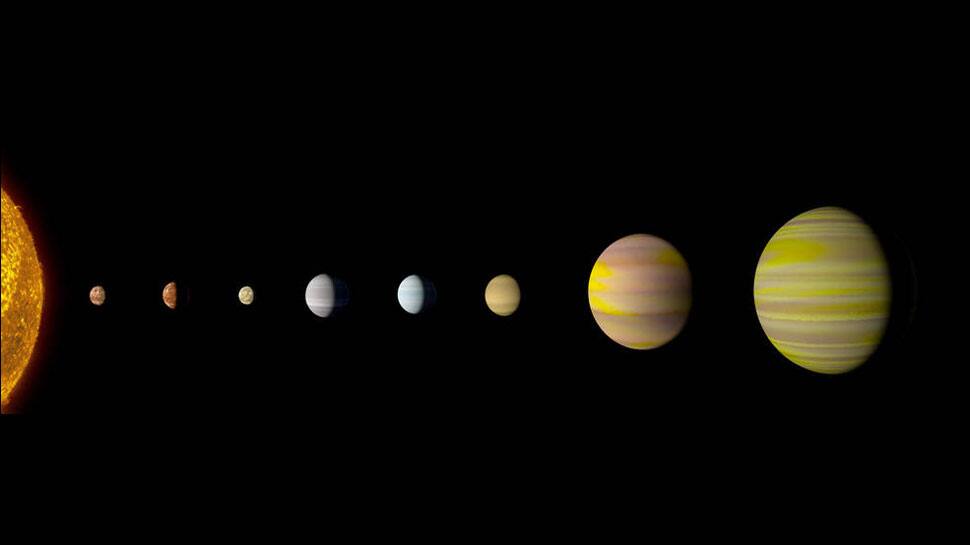New Delhi: Tying with our own solar system and breaking the record for the star with the most exoplanets, NASA's big Kepler discovery has revealed an eighth planet orbiting the star Kepler-90.
The discovery was made by applying artificial intelligence to data from NASA's Kepler Space Telescope.
Described at a briefing on Thursday and in a paper accepted for publication in the Astronomical Journal the planet Kepler-90i demonstrates for the first time that other stars can host planetary systems as populous as our own solar system, the Los Angeles Times reported.
The findings also establish the growing role that neural networks and other machine learning techniques could play in the hunt for more elusive planets outside our own solar neighbourhood.
"Kepler has already shown us that most stars have planets," said Paul Hertz, director of NASA's Astrophysics Division in Washington. "Today, Kepler confirms that stars can have large families of planets just like our solar system."
(Video courtesy: NASA's Ames Research Center)
Sitting around a Sun-like star 2,545 light years away in the constellation Draco, Kepler-90i – like Earth – is also the third rock from its sun - though it sits much closer, circling its star every 14.4 days.
The two small planets within its orbit (planets 90b and 90c) revolve around Kepler-90 every seven and nine days, respectively.
But that isn't where its similarities to our own solar system end. The next three planets beyond Kepler-90i's orbit (90d, 90e and 90f) fall into a sub-Neptune size class and orbit every 60, 92 and 125 days, respectively. The last two planets, 90g and 90h, are Jupiter-class gas giants, and take 211 and 332 days, respectively, to make a round trip.
All of the planets except for 90i were previously known. That put the Kepler-90 system in a tie with the seven-planet Trappist-1 system for the honour of most populous known exoplanet solar system.
In some ways, the Kepler-90 system seems to echo our own, with small rocky planets (Mercury, Venus, Earth, Mars) closer in to the sun and larger, more gas-rich ones (Jupiter and Saturn, Neptune and Uranus) lying farther out.
Scientists think there is a reason the larger planets orbit farther from their sun: It's the cool place to be.
"In our own solar system, this pattern is often seen as evidence that the outer planets formed in a cooler part of the solar system, where ice can stay solid and clumped together to make bigger and bigger planets," said Andrew Vanderburg, an astronomer at the University of Texas at Austin and one of the authors of the forthcoming study.
The same phenomenon could be at work here, scientists said.
But the exoplanet system differs from ours in at least one major way: All eight planets' orbits would lie well within that of the Earth, which takes 365 days to circle our own sun.
The researchers said they aren't sure why the Kepler-90 system has such a crowded field. It could mean that at least some of the planets formed farther out and were eventually drawn inward.
Regardless, it means that Kepler 90i, third rock though it may be, is too hot to be habitable.
"Kepler-90i is not a place I'd like to go visit," Vanderburg said, adding that the planet probably has an average temperature of about 800 degrees Fahrenheit (426 degrees Celsius).
(With IANS inputs)
















